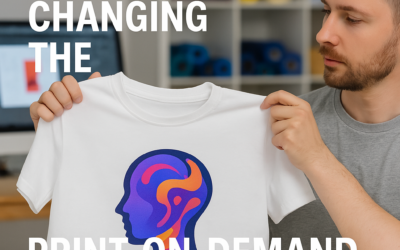The Role of Augmented Reality in Enhancing Product Visualization
Welcome to our exploration of augmented reality (AR) and its transformative impact on product visualization. In today’s fast-paced digital world, AR is emerging as a game-changing technology that small businesses can use to create interactive and engaging experiences for their customers.
What Is Augmented Reality?
Augmented reality superimposes computer-generated images, sounds, and other sensory enhancements onto the physical world. Unlike virtual reality, which completely immerses you in a digital environment, AR blends digital elements with your real-world surroundings. This means that small businesses and large enterprises alike can use AR to add a modern, interactive twist to everyday experiences.
How AR Enhances Product Visualization
AR is revolutionizing the way we visualize products by offering immersive, realistic, and customizable experiences. Here’s how AR benefits both businesses and consumers:
- Interactive Engagement: AR lets customers explore products in a virtual space. They can view items from every angle, interact with key features, and gain an in-depth understanding of how products work.
- Realistic Display: By overlaying digital images onto real-world environments, AR gives customers a clear, true-to-life representation of products, making it easier for them to make confident purchasing decisions.
- Personalization and Customization: AR technology enables users to change colors, sizes, and configurations of products in real time, creating a tailored shopping experience that meets their unique preferences.
- Fewer Returns: Better product visualization leads to more informed decisions, reducing the likelihood of returns and saving small businesses valuable time and resources.
Real-World Success Stories Using AR
Many companies have already integrated AR into their product visualization strategies, demonstrating its powerful potential:
IKEA Place
IKEA’s AR app, IKEA Place, allows customers to visualize how furniture will look and fit in their homes. Using just their smartphone cameras, users can virtually place pieces of furniture in their space to ensure a perfect fit before making a purchase. This innovative approach has not only boosted customer satisfaction but has also significantly reduced return rates.
L’Oréal’s Virtual Try-On
L’Oréal has revolutionized the beauty industry with its AR-powered virtual try-on tool. Customers can experiment with various makeup products using their smartphone cameras to see how different shades and styles suit their features. This tool has increased engagement and conversion rates by empowering users to make more informed choices.
Compelling Statistics on AR’s Impact
Research shows that augmented reality is more than just a buzzword. Consider these compelling statistics:
- A Gartner report indicates that by 2022, 70% of enterprises experimented with immersive technologies for both consumer and enterprise use, while 25% had already deployed them in production.
- A study by Retail Perceptions found that 61% of shoppers prefer to shop from stores offering AR experiences.
- Deloitte research reveals that incorporating AR can boost conversion rates by up to 40% by providing a more engaging and informative shopping experience.
Conclusion: Embracing AR for a Competitive Edge
Augmented reality is setting a new standard for product visualization. Whether you run a local boutique or an online store, AR offers a dynamic way to showcase your products, engage your customers, and ultimately drive sales. As demonstrated by innovations from IKEA and L’Oréal, AR not only enhances the shopping experience but also helps reduce returns and increase customer satisfaction.
For small businesses aiming to stay competitive in today’s digital landscape, integrating AR into your product visualization strategy isn’t just an option—it’s becoming a necessity. Embrace AR technology today and watch your business transform into a more immersive, modern, and customer-friendly operation.









